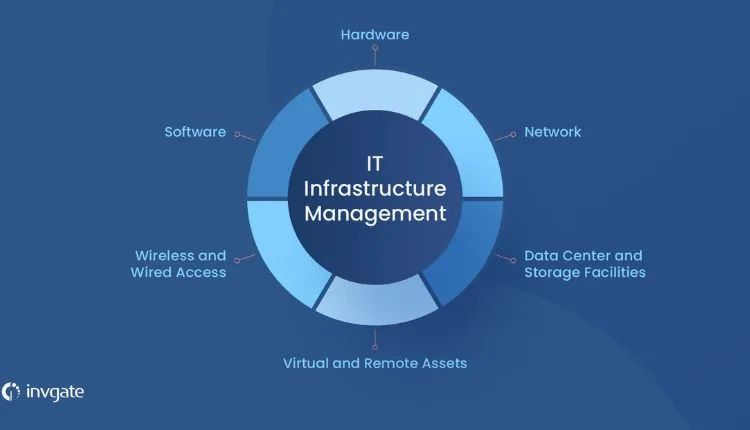What Are the Key Components of a Modern IT Infrastructure?
The landscape of modern business demands more strongly than ever a robust, flexible, and future-proof IT infrastructure. How can businesses guarantee this type of infrastructure?
If you were to look at virtually any business in the world, you would see that they rely on information technology for at least one aspect of their business operations. Whether it’s the daily responsibilities of the most junior employee, or the communications of executives to shareholders, IT is ingrained into modern business. This is why it is so important for businesses to get their IT infrastructure well setup. We spoke about this with TechQuarters, a provider of outsourced IT support London-based organisations have been working with since 2010. They discussed the foundations and key components of a modern IT infrastructure.
Foundations of a Good IT Infrastructure
What we call an IT infrastructure refers to the entire stack of technologies – including hardware, software, and networks – that a business uses. A good IT infrastructure will be highly interconnected, and work seamlessly. There are a number of traps that businesses can fall into when building their IT infrastructure, which can lead to things like overly-complicated systems which are more prone to failure. According to TechQuarters, there are some important principles that businesses should adhere to when they build their IT infrastructure. These principles include the following:
- Structure
Businesses must write up a strict set of guidelines and protocols that govern how their IT infrastructure is managed and used. Unauthorised practices may lead to issues – such security breaches, or hardware failure. Additionally, if the IT team do not adhere to authorised procedures for fixing the infrastructure, and resort to quick fixes and patches, this can quickly come back to haunt the business down the line.
- Simplicity
Outlining a clear structure for the company’s IT infrastructure can also help with keeping it as simple and consistent as possible. The benefits of this are that failures are less likely to happen (conversely, overly complicated infrastructures are not only more prone to failures, but harder to fix); additionally, a simpler infrastructure will be easier to adjust/adapt to new solutions.
- Scalability
Tying in with the previous two points, a good IT infrastructure that is both simple and well-ordered will be much easier to scale up when the business grows. This is something businesses need to take into consideration, and it is worth the extra effort and time to ensure that the infrastructure is easily scalable.
Key Components of a Good IT Infrastructure
So, those are some of the most important foundational principles in building a good, modern IT infrastructure. IT providers like TechQuarters take these principles very seriously, and is why the IT support Croydon and London businesses get from them is so popular. These principles can also help businesses (or their IT provider) with procuring the right components when actually building the infrastructure. Let’s look at these different components:
Hardware
First and foremost, you have the hardware, which is the bread and butter of a buisness’ IT stack – this is because most employees nowadays rely on computers and mobile phones for their means of communication and other responsibilities at work. Some of the crucial pieces of hardware that businesses require might include:
- Desktop PCs, or Laptops
- Mobile devices – such as smartphones, tablets, or 2-in-1 devices
- Printer/scanners
- Servers – for on-premise organisations, although these are being phased out in favour of the cloud in many businesses.
- Ethernet networking hardware
- Wi-Fi Routers / Mesh Routers
Software
Nowadays, software is also critical to many business processes. At the very least, businesses need operating systems for all of their computers, and will also need an internet browsers for their staff to access online resources. But there are many other software solutions that businesses require these days, such as:
- Content creation programs – such as Word, Excel and PowerPoint.
- Antivirus / Security software
- Cloud storage
Communications
And, of course, communications are of immense importance for businesses, and this also happens to be the oldest form of information technology that is still used in business. The types of communication IT that businesses need in their infrastructure include:
- Email – Nowadays, there are many emailing apps available for installation on mobile and desktop.
- Telephony – PSTN phone systems are most common, but these are giving way to internet telephony (PBX and VoIP systems).
- Instant Message – Messaging apps are available on mobile and desktop; businesses should opt for a business solution, like Slack or Microsoft Teams.
- Video Conferencing – For businesses that want to enable remote working, this is a necessity; common business solutions include Microsoft Teams.



